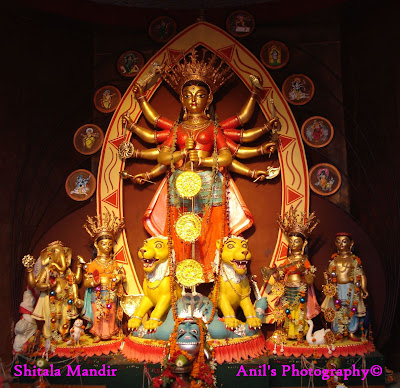Sunrise from Teal House, Port Blair
 Crystal clear Blue water
Crystal clear Blue waterThe Andaman & Nicobar are a group of picturesque Islands, big and small, inhabited and uninhabited, a total of 500 & odd islands, lying midway between India and Burma in the Bay of Bengal.They lie along an arc in long and narrow broken chain, approximately North-South over a distance nearly 800 kms.
According to a Hindu legend, the place derives its name from Handuman or Hanuman, the Monkey God of the great epic Ramayana. Hanuman is said to have used these tiny islands as stepping-stones on his way to Lanka to save Lord Ram’s consort Sita.
According to a Hindu legend, the place derives its name from Handuman or Hanuman, the Monkey God of the great epic Ramayana. Hanuman is said to have used these tiny islands as stepping-stones on his way to Lanka to save Lord Ram’s consort Sita.
The Andaman & Nicobar Islands were shrouded in mystery for centuries because of their inaccessibility. These are the paragon of beauty and present a landscape full with scenic and picturesque exravaganza. These islands shimmer like emeralds in the Bay of Bengal. The dense forest which cover these islands and the innumerable exotic flowers and birds create a highly poetic and romantic atmosphere.
Andaman & Nicobar Islands Popularly referred to as the "Veritable Garden of Eden" and a "nature's paradise", the beautiful small and big islands and pristine waters of Andaman Nicobar India are home to the endless varieties of flora, fauna and marine life. The long stretches of white powdery sand are dotted with many crescent shaped virgin beaches, which are covered with thick groves of coconut palm, casuarinas and pandanus trees. The breathtaking natural beauty, the clean environment, thrilling adventure sports, and the warm hospitality of the people of Andaman Nicobar Island attract thousands of nature lovers and holiday makers from all across the globe.
--
-- Coral Viewing at Wandoor Beach --

These beautiful Islands are accessible from main land India by ship and air from Kolkata (Calcutta) and Chennai (Madras). We explored the Islands between 20 Oct and 30 Oct 2009 and season last upto April end.
Places to be visited : Havelock Island, Neil Island, Lime stone cave, Rangat, Mayabunder and Diglipur.
Places to be visited : Havelock Island, Neil Island, Lime stone cave, Rangat, Mayabunder and Diglipur.
--
-- Coral Viewing at Wandoor Beach --









































